Results
-
 £53.50
£53.50The Polar Express (Main Theme) - Alan Silvestri
From the blockbuster holiday film, here is an easy arrangement of the main theme. Sure to be enjoyed year after year, this spirited version will sound great with beginning groups.
Estimated dispatch 7-14 working days
-
 £42.50
£42.50Poker Face - RedOne
Featuring a driving rhythmic style and distinctive melodic lines, this megahit from pop icon Lady Gaga works great for young bands. Sean O'Loughlin skillfully retains the sound of the original in this well-scored and effectivearrangement.
Estimated dispatch 7-14 working days
-
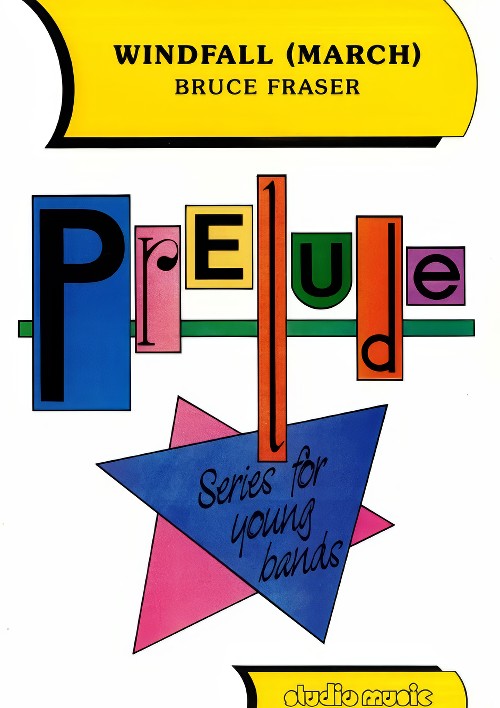 £44.95
£44.95Windfall (Concert Band - Score and Parts) - Fraser, Bruce
Windfall should be taken at a steady march tempo, with full note values and is a useful piece for developing a good band sound. Dynamic changes are particularly important to avoid monotony in the overall sound and young players are introduced to the concept of D.C. al fine.Titles in the Prelude Series are specifically scored for bands with few, if any, bass instruments but will sound well on larger ensembles. The bass line is playable by any combination of bass clarinet, bassoon, baritone saxophone, trombone, euphonium or tuba; in the event that none of these is available, the part for trombone/euphonium (B flat TC) can be played by tenor saxophone. The tuned percussion part is entirely optional and can be played by any available instrument(s). Each piece also includes a preliminary exercise. This is always in the same key as the accompanying piece and consists of a scale and chord progression that can be used for improving ensemble, balance, intonation and instrumental facility by changing tempo, articulation and dynamics.Duration: 3:00
Estimated dispatch 7-14 working days
-
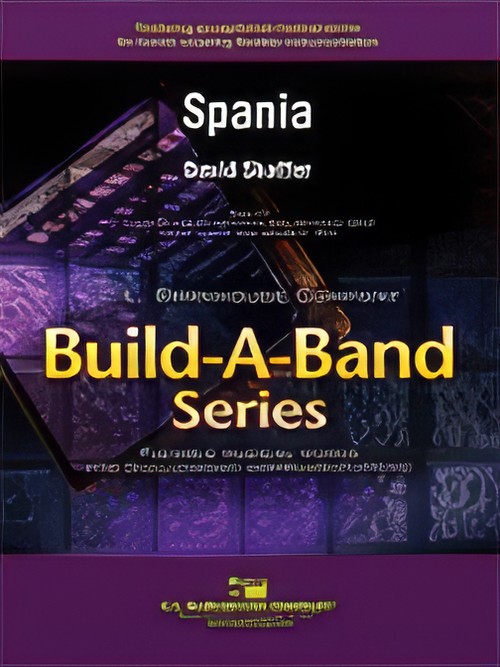 £60.00
£60.00Spania (Flexible Ensemble - Score and Parts) - Shaffer, David
A delightful piece with a Spanish flavor that is sure to be a highlight of any concert performance and will allow very small bands and bands with severe instrumentation issues to sound just like the big guys. Will sound big and powerful as long as you have the four main parts covered. Includes optional tympani, percussion and piano parts which can enhance the sound even further. A real toe-tapper!
Estimated dispatch 7-14 working days
-
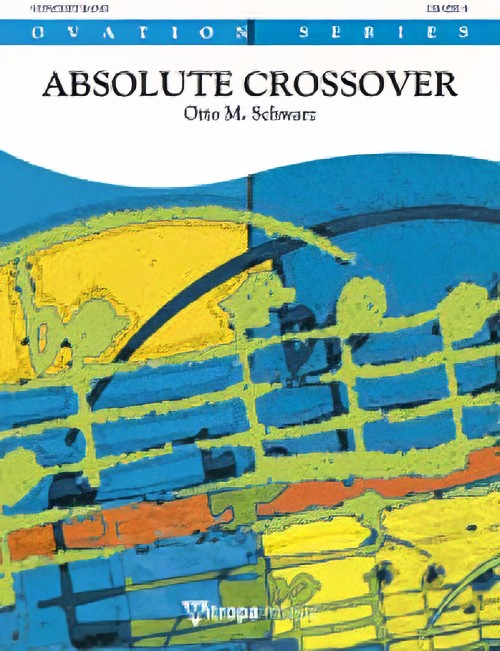 £134.99
£134.99Absolute Crossover (Concert Band - Score and Parts) - Schwarz, Otto M.
This composition is made up of three themes, which feature all the facets of the instrumentation of a concert band as well as that of a big band. The symphonic passages, reminiscent of film music, enable the full tone and colour of the concert band to be heard, whilst the big band sound is represented in the rock segments and slow swing sections. The musical journey travels along practically all styles, ending with an impressive tutti, in which the shuffle rhythm of the big band melts together with the grand, classic film music sound of the concert band.Duration: 7:45
Estimated dispatch 7-14 working days
-
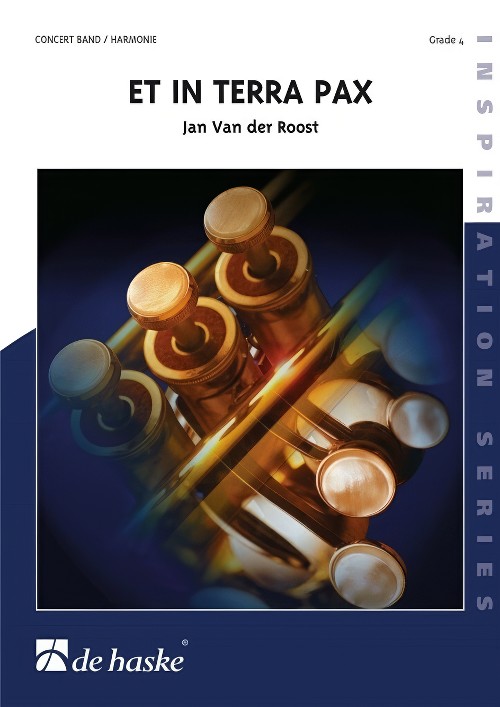 £174.99
£174.99Et in terra Pax (Concert Band - Score and Parts) - Van der Roost, Jan
This piece was commissioned by the Concert Band Vlamertinge and is a plea for peace: the title translates as Peace on Earth. This is expressed by means of the vocal contribution expected from the performers. In various places of the piece you can recognize, the words Et In Terra Pax, an appeal for peace, at first jumbled together but later more rhythmically structured, developing into synchronized massed voices. The work starts with a pentatonic theme based on the notes D, E, G, A and C (taken from 'ConCErtbAnD VlAmErtinGE' and the name of the conductor, NiCk VAnDEnDriessChe). A somewhat sad melody is developed during an orchestral climax which leads to the first explosion of sound (measure 62 onwards). Suddenly the opening measures are recaptured, albeit with a differently coloured sound: the words Et in Terra Pax bring the first movement to a close. A restless Allegro follows which abruptly stops and is replaced by a calming chorale-like passage. A narrator reads aloud the poem 'Sonnet' by the young poet Charles Hamilton Sorley, who was killed during World War I. This poem fittingly puts into words the cruelty and senselessness of war. After the expanded recapitulation of the allegro, the broad, almost infinite atmosphere of the beginning returns. Clarinet and English horn play the pentatonic opening theme once more, this time broadly, while the words Et in Terra Pax are repeated again and again by the rest of the ensemble. The composer has purposely avoided all forms of aggression and bombastic sounds regularly used in works about war. Fear of violence and destruction can be heard and felt during the allegro passages. The charged opening makes way in the end for hope: May peacefulness replace cruelty in everyday life, too.Duration: 13:45
Estimated dispatch 7-14 working days
-
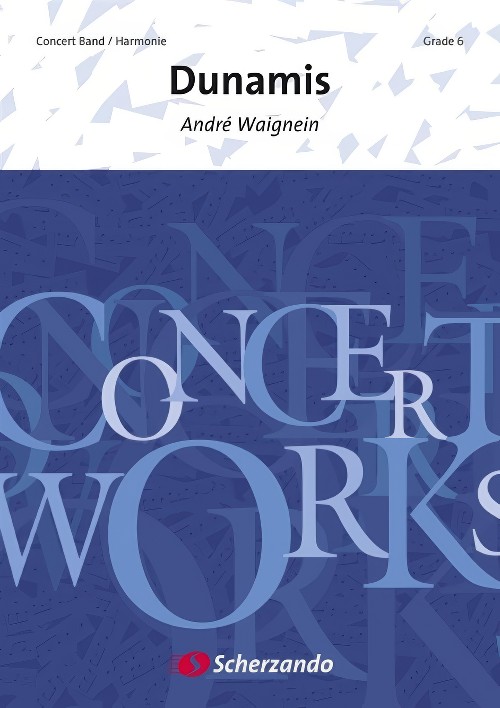 £209.99
£209.99Dunamis (Concert Band - Score and Parts) - Waignein, Andre
Major Yvon Ducene wanted a new lush and colourful composition for his Guides military band, with Andr Waignein as its composer. Early in 1979 the composer began his assignment and in October of the same year, the finished full score was on the music stands of this prestigious military band of the Belgian Army.The introduction (Grave) mirrors an atmosphere full of serenity in which the theme, played by the oboes and the English horn is predominant and immediately holds the listener spell-bound. It is taken up again as central element of the slow movement.The Allegro breaks away from the quiet passion of the introduction. Here, the band can really show its capabilities to the full. Based on a very precise rhythm, an idiom of sudden desperation and adversity develops which, fused with a crushing aggression, culminates in a kind of eruption, soon calmed down by a Lento : peace and quiet has returned thanks to a melody by the horns and soon taken over by the clarinets. In the meantime, the saxophone - an instrument full of human emotion - express the main spatial dimension in contemporary psyche. Following a harmonic transition the brass-players take up the theme again in forte whilst the basses and the woodwinds intertwine in technical arabesques.The movings of the mind and the heart get an audible and almost touchable shape in the ensuing Allegro, a movement characterised by a rhythmic dialogue in which the whole orchestra participates and where the exposition contains a wealth of sound and technical contrasts. The Lento finally uses the central theme of the slow movement again, with some occasional references to the two allegros. The last page is of unprecedented grandeur. All the instruments display their most beautiful sound which were named by Jacques Ferschotte, when speaking about Honneger, "harmonies d'intensits" harmonies of the unmeasurable.Duration: 14:30
Estimated dispatch 7-14 working days
-
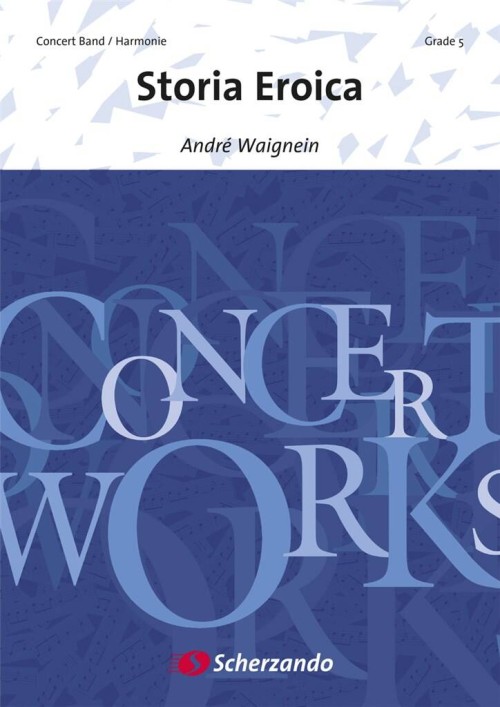 £204.99
£204.99Storia Eroica (Concert Band - Score and Parts) - Waignein, Andre
This composition was commissioned by the "Municipal Brass Band of Luxembourg-Bonnevoie". It was premiered in presence of the Grand-Duke Heir Henri on January 24, 1998 with this orchestra, and with the composer as director. This work is a musical evocation describing this magnificent Luxembourgian region and her inhabitants. The overture evokes the serenity met in this region. An orchestrale development, as rhythmic as sound, propels the orchestra in a "military" atmosphere putting in evidence all the registers of the orchestra. This tension is maintained until the general explosion of the whole. One cantilena appears in all the innocence. Gradually, the orchestration suppresses, until the exhaustion. The passage which follows represents the tempestuous events which took place through ages. A spectacular cadence, by the clarinet or by the soprano saxophone, terminates this disorder. An ample and lyric theme reflects the generosity which always played an important role. Then, having found some of initial themes, work ends in an atmosphere of enjoyment, developed in rich and eclectic one variety which proves the sphere of influence of the sound colour at Andr Waignein.Duration: 14:00
Estimated dispatch 7-14 working days
-
 £89.99
£89.99Distant Hymns - Greg Sanders
Distant Hymns is the third movement from the composer's work Dreams and Faith (The Solomon Valley Anthology). The American Composers Alliance commissioned the work for their Continental Harmony Project. In the late 1880s and early 1900s, many of the inhabitants of the Solomon River area in northern Kansas meticulously documented their lives in the vast expanse of the Kansas prairie in writings in their personal diaries. Several writers recorded an unusual phenomenon where the wind often carried sounds over the open prairie and fields with no visible sound source. An example of this display was sometimes the presence of music, often church hymns, carried with the wind from assumed distant churches that were frequently not there. The melodies could be heard constantly changing in volume and sound as the winds continuously changed directions. Distant Hymns is a musical representation of this experience, where a simple hymn tune is handed to and integrated between different groups of instruments. Ebbing frequently, the music varies in loudness and softness as the melody moves freely upon the wind.
Estimated dispatch 7-14 working days
-
 £98.50
£98.50Eternal Flame - Brian Balmages
This thrilling and majestic overture by Brian Balmages pays homage to the only eternal flame memorial in the United States dedicated to Medal of Honor recipients. Subtle nods to "America" remind the listener of the incredible sacrifices made by these brave individuals. While the piece is not overtly patriotic, the olympic-style fanfares and stately themes make it more than suitable for such an occasion! (5:40)Recorded sound courtesy of the U. S . Marine Band. Use of the recorded sound does not constitute or imply endorsement by the Department of Defense, U.S . Marine Corps, or U. S. Marine Band.The terms U.S . Marine Band and "The President's Own" are trademarks of the U.S . Marine Corps, used with permission.
Estimated dispatch 7-14 working days
